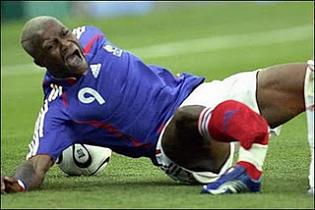Understanding Sports Injury
It is rather difficult to describe what constitutes a sports injury because, so far, the clinical point of view about definition of sports injuries has been very diverse. Etiology and diagnosis are aspects that still have a major role with respect to the quantification of the severity of an injury. In some studies, only those events are defined as injuries that require medical treatment, while other authors point out that an accident or an event can be considered an injury only when the sportsperson needs to, rest for at least a week to participate in the sport.
The fundamental aspect of most accidents is related to the effects they cause on competitive performance and training sessions. As a result, an injury is often defined as the event that prevents the athlete from complete and full participation in a training session or a match. We should also consider the severity of the sports injury, which is usually measured by the number of days of absence from sports participation. Injuries are classified according to the length of absence from the training sessions of training and games in the following ways:
· Mild (1 / 3days of absence)
· Minor (4/7 days of absence)
· Moderate (8/28 days of absence)
· More (> 28 days off) including the day of the accident
The severity of the injury is also evaluated by considering it effects on the athlete with the help of the following criteria:
· Degree and nature of disability
· Implications on long-term health of the athlete
· Complexity of the treatment required
· Cost of treatment and recovery time
Sports injuries that do not result in long-term effects are also classified according to:
· Days spend in the hospital
· Days of abstention from training and games
· Days characterized by limitations in physical activity
The lesions are also classified according to the cause of injury, and this allows us to study the preventive measures. The following are the most widely accepted definitions of cause of injury:
· Extrinsic - due to an event of extreme physical strain, and
· Intrinsic - due to the internal psychological pressure and stress which the individual is faces.
The injury is defined as acute when is the result of a single, sudden traumatic event that occurs when the muscle is relaxed suddenly due to a functional overload that develops gradually, over a prolonged period of time.
Intrinsic factors
Among the intrinsic factors that increase the risk of injury are the age and sex of the sportsperson. Furthermore it has been shown that athletes who are overweight are more prone to injury. Amongst the intrinsic factors we find clinical conditions such as asthma, diabetes, epilepsy, as well as diseases of short duration (fever, cold etc.), previous injuries (relapse), ligamentous laxity, technical inexperience, psychological factors, and lack of care and high levels of anxiety increase the chances of accidents and injuries.
Injuries can also be caused by excessive training, lifting very heavy weights, or training without proper supervision.
Comments
There are 0 comments on this post













